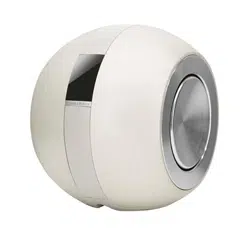Loading ...
Loading ...
Loading ...

5
ENGLISH
Contents
ENGLISH 2
1. The PV1D Active Subwoofer Introduction 5
2. Unpacking the Subwoofer 6
3. Positioning the Subwoofer 6
4. Connections 7
5. Switch on and setup 9
5.1 The user interface 9
5.2 Initial Setup 10
5.3 Audio setup 11
5.4 Presets 13
6. Conguring a Surround Processor 14
7. Home automation 14
8. In use 14
9. Aftercare 15
10. Storing current settings 15
11. Restoring settings 15
1. The PV1D Active Subwoofer Introduction
Safety
Before connecting and operating
this mains powered apparatus,
please read carefully and observe
the Important Safety Instructions in
the accompanying leaet.
Performance
The PV1D active subwoofer offers very high
performance low-frequency reproduction for either
multi-channel home theatre or conventional stereo
audio systems. It incorporates a comprehensive set
of features that enhance its versatility and enable
its performance to be nely tuned to the type of
installation. These features are briey described in the
following paragraphs:
Control and User Interface
The PV1D can be set up and operated either from
its front panel controls or using the Bowers & Wilkins
PV1D SubApp™ setup and optimisation application
running on a PC. SubApp™ is downloadable from our
web site – www.bowers-wilkins.com – and operation is
described in its help le.
Multiple Inputs
The PV1D provides both line level and speaker level
inputs, which may be connected simultaneously for
different applications. See Section 4 for more.
Line Input Adjustable Input Sensitivity and Level
The PV1D provides input sensitivity options that enable
its optimum matching with source electronics, and
variable gain control to match its volume level with that
of the main speakers. With all the levels of PV1D set to
their default value of 0dB, the subwoofer has the THX
®
standard sensitivity of 109dB spl at 1m for an input of
1V rms. See Section 5.3 for more.
Line Input Polarity Inversion
The PV1D provides optional polarity inversion that
enables compensation for the polarity inversion
occasionally found in electronics. See Section 5.3
for more.
Speaker Input
The PV1D output may be adjusted to match that of
the main speakers by simply entering a single
sensitivity gure.
Equalisation
The PV1D incorporates four equalisation options
tailored for different applications, including
enhancement of the low-frequency impact of
audiovisual material. See Section 5.4 for more.
Setup Presets
The PV1D incorporates ve setup memory locations
where groups of setup parameters can be congured,
stored and recalled. The setup parameters that can be
congured and stored are:
• Input selection
• Input level
• Equalisation
• Low-pass lter (engaged or not)
Setup presets enable different PV1D performance
characteristics to be easily selected for different types
of program material or different listening occasions.
See Section 5.4 for more.
Loading ...
Loading ...
Loading ...
